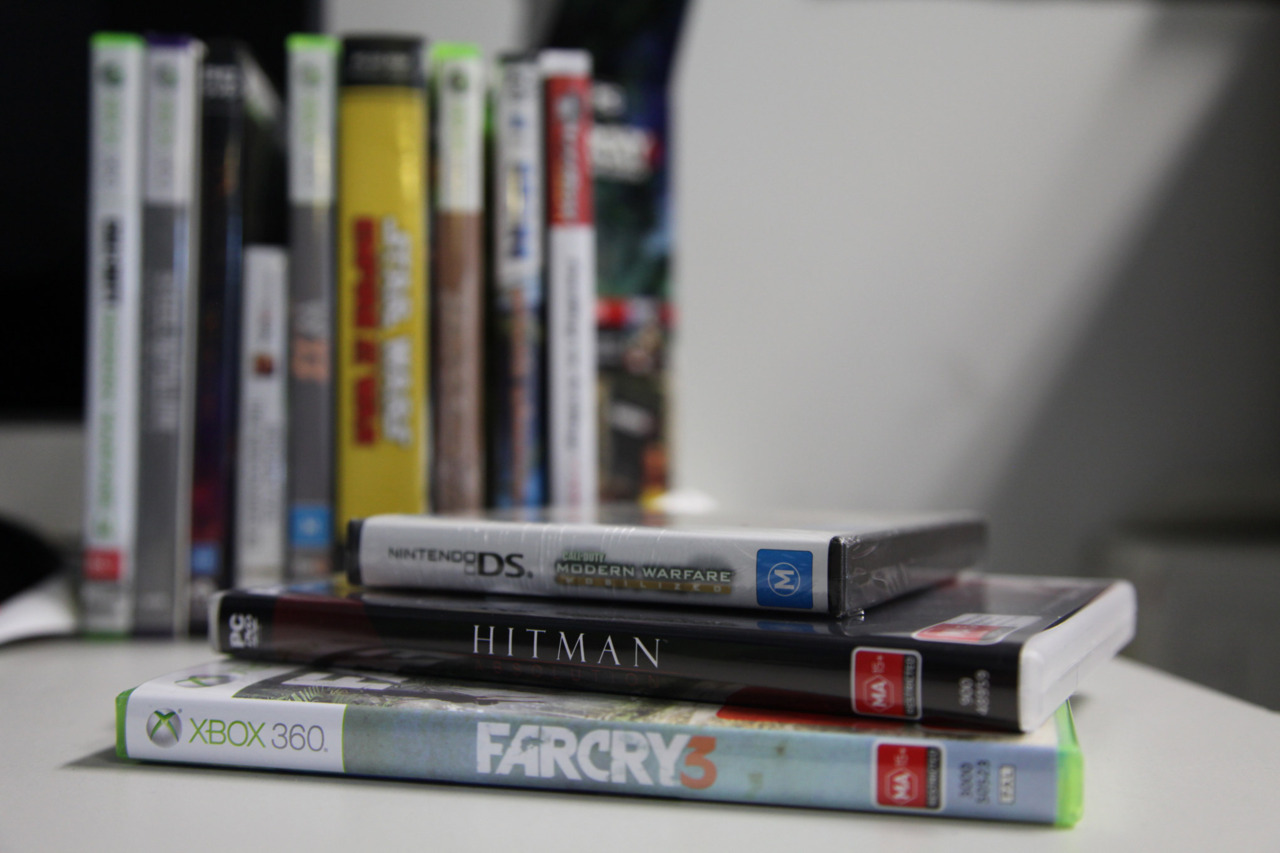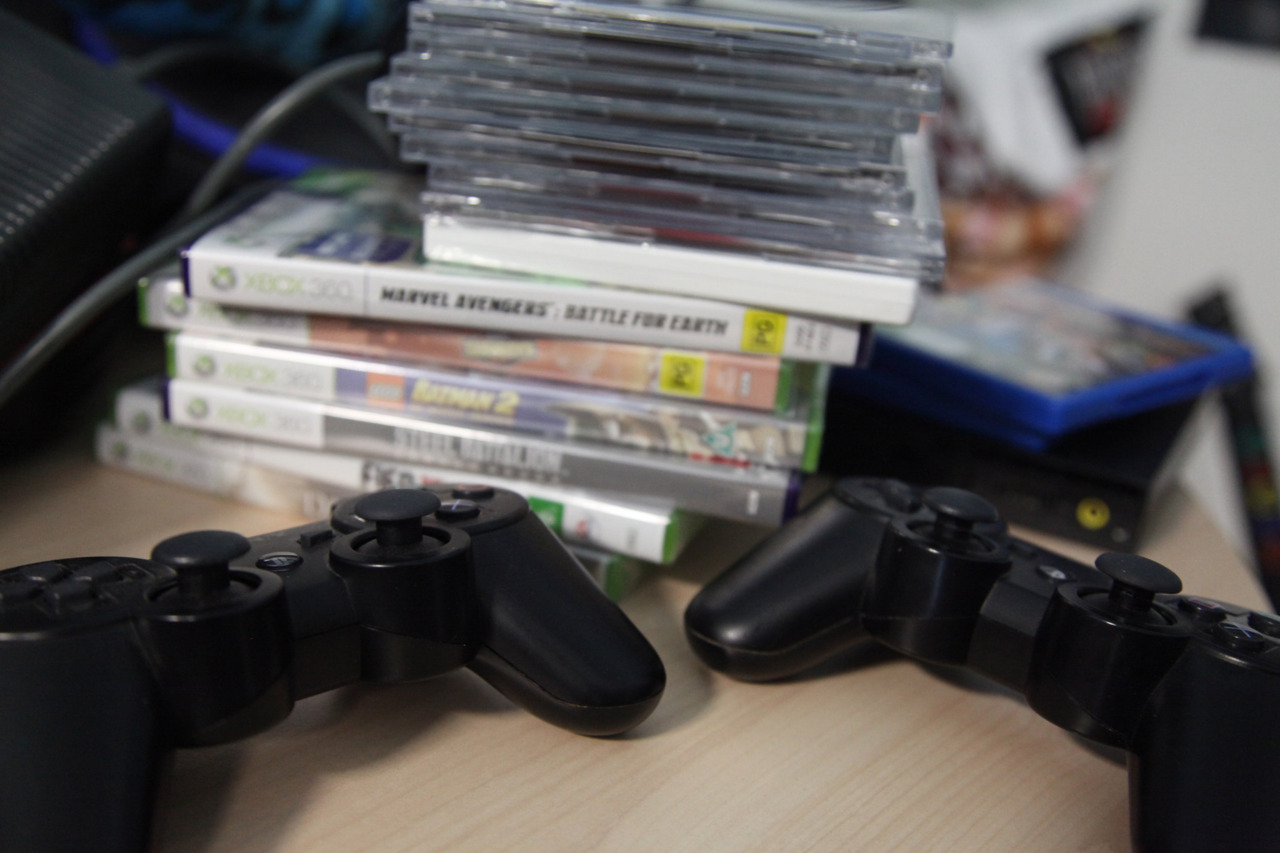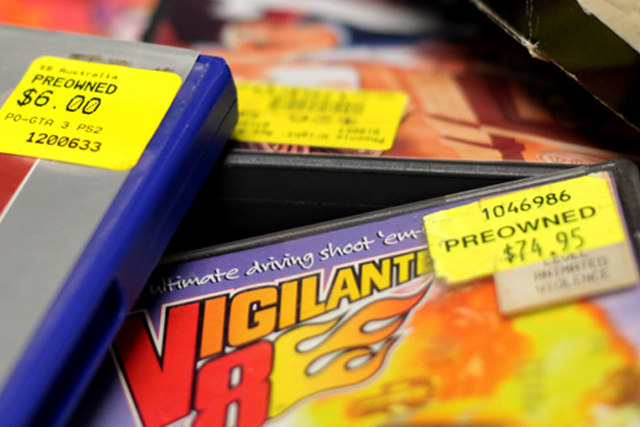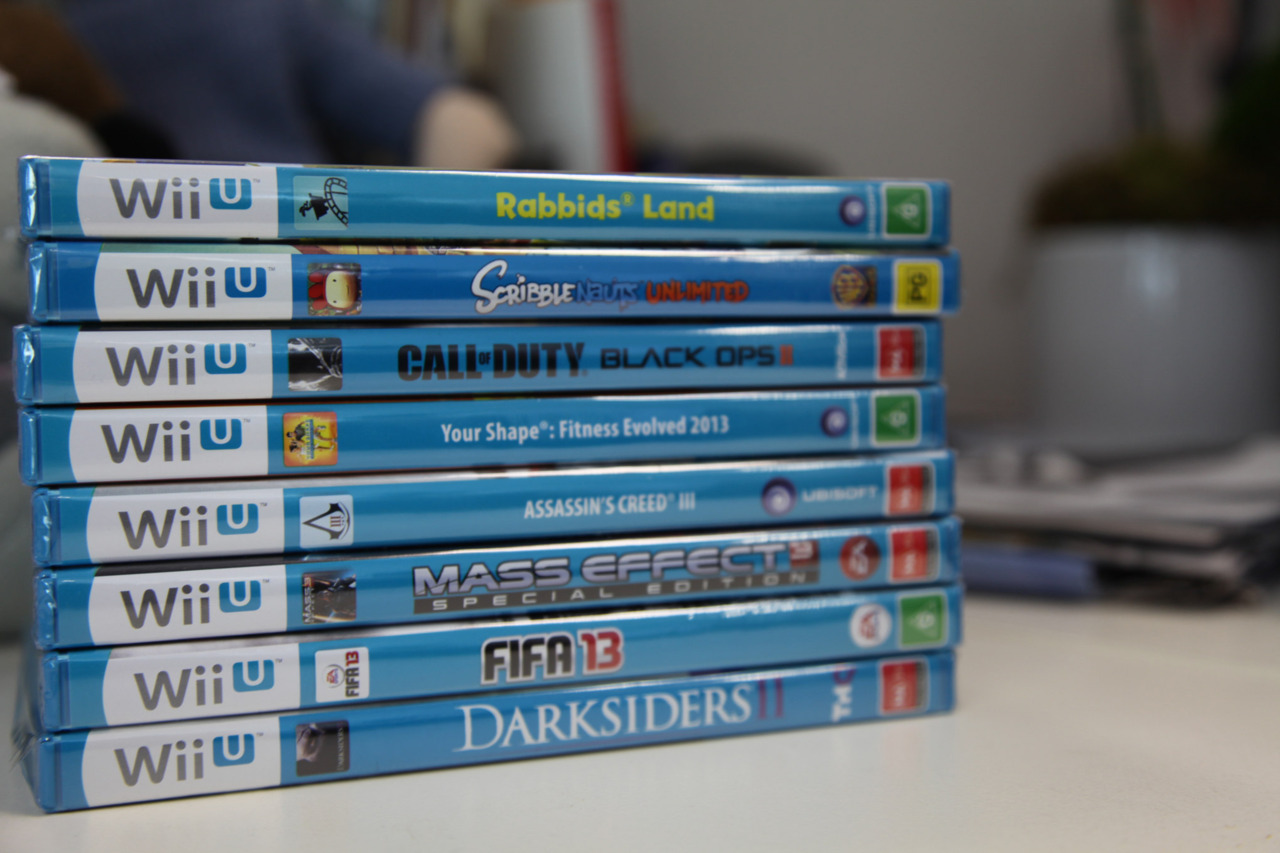Why Australian game prices will not drop
We speak to industry insiders to find out why the future of the Australian video game industry depends on video game prices staying where they are.
The reasons for Australia's high game prices have been well-documented in the past. Local video game publishers insist that Australia's very small population is spread out over a large area, making it more expensive to distribute and move stock around than in territories like North America, Japan, or Europe, where the number of people per square kilometre is higher.
But now, local game industry insiders are pointing to another reason why Australian consumers regularly pay between $80-$110 dollars for new-release titles that average around the US$50-$60 mark in North America. According to industry sources, Australian game publishers and retailers would face certain extinction in the local market should new-release titles drop below a recommended retail price of $80.
This, the sources insist, is why game prices in Australia will continue to remain high.
So who--or what--is to blame? And can the Australian market survive without local game publishers?
***
Video game prices across the world are dropping. Spurred by the onset of new distribution models, online retail, and the creation of a more direct relationship between gamemakers and consumers, publishers are being forced to find new ways to speak to an increasingly apathetic market struggling with an uncommonly long console cycle and reports of an industry-wide creative slump.
"The current console cycle is long in the tooth," EEDAR's Jesse Divnich told GameSpot. "We've never gone seven-plus years before without a refresh in home hardware, and we are beginning to see the negative impact of what occurs. Without new technologies/features to work with, innovation is stifled, which creates an apathetic consumer market."
Australia is certainly not exempt from this trend, even if the impact on local pricing has not been as significant as in other territories.
According to EB Games, Australia's largest physical video game retailer, video game prices in Australia have dropped on average about 20 percent in the last year. While Australian game publishers are choosing to stay silent on any official drops in standard recommended retail price (RRP) across new-release titles (all major publishers declined to comment on the issue when contacted by GameSpot), the evidence seems to indicate that game prices in Australia are dropping, albeit slowly. Triple-A new-release titles such as Assassin's Creed III, Halo 4, Dishonored, and Far Cry 3 all launched in the last 12 months with an RRP of $89.95 (for consoles). Retailers also offer discounts on new-release titles, lowering prices even further: for example, at the time of writing, JB Hi-Fi is offering Far Cry 3 for $69.
However, the general feeling among consumers is that game publishers could be doing more to bridge the gap even further.
Earlier this year, the Australian government announced a parliamentary inquiry into high product prices in the Australian IT and technology sector, including video games. In its submission to the inquiry, Australian consumer group CHOICE conducted research to show the differences between Australian and US tech prices, reporting that:
"Australians are paying on average 34 percent more for software, 51 percent more for iTunes music, 88 percent more for Wii games, and 41 percent more for computer hardware than US consumers."
At a subsequent public hearing into the issue, Australian Industry Information Association--which represents hardware, software and digital media vendors--cited retail rental costs, research and development costs, labour costs and warranty obligations as major reasons why Australians are forced to pay more for technology hardware and software.
Speaking at the hearing, former EB Games employee Damien Holley said he had continuously asked local game publishers why games were more expensive in Australia during his time working for the retailer.
"Several explanations came over the years," Holley told the hearing. "The first was [that] the [Australian] dollar was too low against the US dollar. Later, when we got parity, it was claimed that different advertising took up the cost. When informed that the same ads in the US were playing here, the excuse changed to import taxes and the general cost of importing the games."
Later, Holley told the hearing that he believes publishers were prepared to adjust game prices to "what they believed the market would pay".
While this sounds like greed on the part of game publishers, some sources say the lowering of game prices in Australia any further could prove fatal for game publishers based in the region.
GameSpot spoke to several sources working for a number of different Australian game publishers who agreed that game prices in Australia can only go so low: publishers, just like retailers, have their own cost structure to maintain. Expenses like payroll, rent, and dealing with the high costs of distributing stock around the country means local publishers want to hold on to what little profit they can still make.
And even that is reportedly under threat.
One source working for a game publisher in Australia who wishes to remain anonymous says the idea that game publishers in Australia are "greedy" because they are not lowering game prices in the region is a misconception.
According to some sources connected with several different Australian game publishers, it is common for publishers in Australia to spend roughly $30-$40 producing a single copy of a new-release game, which is then sold to retailers for around $50-$70. Retailers then sell this to consumers for $89-$105. (However, one source connected to an Australian game retailer disagrees on the first number, saying game publishers in Australia spend less than $10 on a single copy of a new-release game.)
While both scenarios appear to be profitable for game publishers and retailers and unfair for consumers, the reality is reportedly very different. Most sources who spoke to GameSpot agreed that if game prices in Australia were to fall below $79.95, both retailers and publishers would stop turning a profit, meaning the end of physical video game retail in the region.
"It's true that publishers in Australia have begun to lower their RRPs to somewhere below $99, but anything lower than $80 is not possible," one source told GameSpot. "If publishers were to go below this RRP price, it would mean an automatic lowering of cost prices to retailers, which in turn would force publishers to start cutting costs by letting staff go, closing down branches, and so on. This would eventually lead to the closure of smaller Australian-based publishers, companies like THQ and Namco Bandai."
A shrinking physical game sales market means this has already started to happen.
Earlier this year, publisher THQ shut down its Australian operations, moving from a direct sales model to a distributor model and in the process, letting go all 18 remaining employees. The closure followed a previous restructure earlier this year, in which an undisclosed number of employees were laid off across THQ's global administration and publishing wings, including an undisclosed number in the Australian office after the publisher outlined a new corporate strategy of moving away from affiliate label programs to focus on wholly-owned IP. (THQ had previously shut down both of its Australian-based development studios, Blue Tongue and THQ Australia, in August last year.)
Also this year, Sega announced a worldwide restructure, which saw the closure of offices in France, Germany, Spain, Benelux, and Australia. (The restructure came after Sega announced it would be halving its expected revenue while predicting company losses of US$86.4 million, cancelling several unnamed titles in the process.)
Speaking to GameSpot under the condition of anonymity, one source connected to both Sega and THQ in Australia said the fate of both publishers in the region is a sign that smaller publishers will have to fight hard to survive in Australia in the future.
"Global price drops of physical game software, the rise of digital distribution, increased grey-importing practices in Australian game retailers, and fluctuating currencies are all spelling a slow death for the remaining mid-to-small range game publishers based in Australia," the source said.
A former employee of an international game publisher based in Australia points to another threat: mass-market retail chains like Kmart and Target. Typically, stores like Kmart, Target and Big W sell video games at a loss (i.e. for less money than the retailer paid to buy the games), meaning on average, video games cost less in these mass-market chain stores than in specialist video game retailers like EB Games.
The reason for this is that mass-market retailers often use video games to entice customers to purchase higher-margin products sold in their stores: things like furniture, clothing, etc. By positioning video games and other entertainment media at the back of the store, retailers like Kmart and Target lure consumers in and past a variety of other products which, in the long run, proves more profitable and makes up for the sale of lower-margin items like video games at a loss.
Speaking under the condition of anonymity, the source says this measure puts pressure on game publishers and video game retailers to continually lower the prices of video games sold in Australia.
"The lowering of game prices in Australia is a reaction to things like this," the source said. "But it's not a viable business practice. Game publishers in Australia will not last long if they have to compete with this, and with online."
This raises the question of whether or not the Australian video game market could survive without the presence of local video game publishers.
"Technically everything can be done at a global level now," the source said. "Publishers don't really need a local presence in a market like Australia."
However, the Interactive Games and Entertainment Association (iGEA), which represents Australia's video game publishers and distributors, believes a local game publisher presence has real value for consumers in the local market. For example, if a local publisher is not on hand to sell a game to a local retailer, it can mean no localised special editions, no visiting developers, no local community events or support.
"The revenues generated locally support not only local employment, but fund marketing, in-store displays, advertising, classification obligations, etc," iGEA CEO Ron Curry told GameSpot in May. "Without this local level of support, retailers in Australia will see a direct impact on their business, as will consumers and other local businesses who survive by supporting the Australian video game industry."
***
The fast-growing list of threats to traditional business practices in the physical video game market is also the reason for inconsistent digital game pricing on platforms like Steam and Origin, according to several sources in the Australian video game industry.
One source connected to a video game publisher in Australia says it's understandable for consumers in Australia to feel like they're being taken for a ride when it comes to digital pricing of games in the region.
"Other than minor tax differences (e.g. Australia has 10 percent GST; UK has 20 percent VAT; the US has sales tax which varies by state), I see no reason why digital content should be different prices in different markets," the source told GameSpot under the condition of anonymity.
"It's simply not credible since all the arguments publishers and retailers use for higher prices in a region like Australia (i.e. higher labour costs, rent, smaller market, and so on)--these just don't apply to digital."
The source suspects the reason digital game prices don't match up from region to region is because game publishers have to maintain a good relationship with game retailers in their territory.
"If publishers applied price parity for digital content across territories, you would significantly harm games retail stores in a country like Australia almost overnight. Why would consumers buy a $79-$89 box when they could get it online for $39-$49?"
Another source says that if publishers in Australia were to begin matching digital prices with other regions, game retailers in Australia would "become upset". This is of particular concern in a market as small as Australia's, where--as explained above--retailers form a big part of game publishers' business.
But what would happen if game publishers simply packed up and moved out? Can the Australian game industry survive without a local publisher presence?
"Everything can be, and often is, done on a global scale now," a source within the Australian video game industry told GameSpot under the condition of anonymity. "All issues can be solved this way. Everything that's happened--lower game prices, the growth of digital distribution, even grey-importing--it's all sign that consumers are ready to embrace a new business model."
If consumers are the ones who hold the power to effect change (not publishers or manufacturers), why do video game prices continue to remain disproportionally high in some territories compared to others? Are consumers failing to act on their words?
A source with a number of years experience working for an international game publisher in Australia says video game prices in any territory depend on changes in the market, which in turn are dictated by consumer behaviour. If video game prices are starting to drop, it's because consumers want it that way. If prices haven't dropped far enough, it's because consumers keep buying games.
"Video game prices are set by market and consumer demand," the source told GameSpot under the condition of anonymity. "There's no shadowy conspiracy going on here to make games more expensive in Australia. It's all about what the consumer is willing to pay, both for physical games and for digital copies."
"People complain so much [about game prices in Australia] but they still go out and buy the games. It's a lot of noise but very little action. If consumers got fed up with paying so much for games in this country, they'd stop buying them altogether, both at retail and digitally. But that hasn't happened on a mass scale yet."
The source says the slight dip in video game prices that Australia has experienced is a by-product of game retailers' grey-importing measures and an increasing number of consumers buying games from online distributors, a trend that's sparked a worldwide industry debate about the ongoing relevance of physical game software.
Melbourne entrepreneur Ruslan Kogan, founder and CEO of online-only consumer electronics store Kogan, believes video game retailers will become obsolete in small consumer territories like Australia once more publishers make the switch to digital distribution.
"Ultimately, the way the industry is headed, no one is going to buy physical games," Kogan told GameSpot. "It's all going to be digital downloads, from the publisher direct to the consumer via their console or device. There'll be no need to go to stores anymore."
Kogan (the man) has used his own online business to demonstrate what a market without physical retailers might look like. Kogan (the site) operates on a manufacturer-to-consumer model that sees the store's consumer electronic products--which includes both Kogan-manufactured products and third-party products such as cameras, mobile phones, tablets and video games--bypass traditional importers, wholesalers and retailers altogether.
Since launching in 2006, the company has grown 400 times its original size, now selling more products in one day than in its first year. With projected revenues of over $150 million by the end of the 2012 financial period, Kogan says consumer electronics companies and game publishers alike are performing under an outdated business model that results in high product prices and an over-reliance on physical retailers.
"They're too scared to admit the business model they are running is not efficient," he said. "They've rested on their laurels too long and now they can't compete with businesses who are doing things a different way."
Kogan points to the fact that Australia's geographic positioning should make consumer electronics and video games cheaper, not more expensive, than in territories like the US or Europe.
"All consumer electronic products are manufactured in places like China, Hong Kong, Taiwan, or Japan. To send containers from any of those places to Australia takes about 13 days compared to 25 days to the UK or the US. We're half the distance away--we should be able to sell these products cheaper and more efficiently than in those other territories."
While Kogan recently expanded his company's product-line to include video games, he is wary to push it further than a handful of the most popular titles (at the moment Call of Duty: Modern Warfare 3, Battlefield 3, and FIFA 12) due to the shift he predicts will happen in the next two to three years in the global games market.
"We all know what's going to happen to physical games," he says. "That's exactly why we're only selling them as a temporary thing."
Paul Yardley, the former managing director of GAME Australia, believes there's still time to turn things around. For the moment, the growing mainstream sector of the gaming audience is tethered to the physical retail experience, something he doesn't see changing for at least the next 20 years.
"In the short-term, both publishers and consumers will still find a need for physical game retailers," Yardley told GameSpot. "In the long-term, 20 years from now, I think retailers will finally become obsolete. The gaming industry will be all about services."
Yardley believes both retailers and publishers could be doing more to help both themselves and consumers in a market where games will likely always be more expensive compared to other territories.
"Game retailers need to engage with digital products in a bigger way," he says. "They need to start finding ways to sell digital content in-store and turn that into a new revenue stream. Meanwhile, publishers should think carefully about cutting back the number of titles they publish each year and instead concentrate on putting out quality content. The average consumer can only buy four or five games a year: publishers should make these games count."
'Got a news tip or want to contact us directly? Email news@gamespot.com





Join the conversation